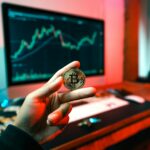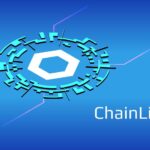Non-fungible tokens (NFTs) have exploded in popularity in recent years, generating significant interest and investment within the world of digital art, collectibles, and beyond. NFTs are unique digital assets that represent ownership of a specific item, be it an artwork, virtual real estate, or digital merchandise. But what motivates people to buy NFTs, and what are the potential benefits and implications of this burgeoning market? This article delves into the motivations behind NFT purchases, exploring the benefits, potential drawbacks, and future implications of this new form of digital asset ownership.
I. Understanding NFTs: A Brief Overview
Blockchain Technology and NFTs
NFTs are built on blockchain technology, the same decentralized, distributed ledger system that underpins cryptocurrencies like Bitcoin and Ethereum. Each NFT contains a unique identifier and metadata, making it distinct from any other token in existence. This uniqueness allows for the authentication and provenance of digital assets, enabling individuals to claim verifiable ownership of these items.
The Emergence of NFT Marketplaces
The NFT market has grown rapidly, with numerous platforms and marketplaces emerging to facilitate the creation, purchase, and sale of these digital assets. Some popular NFT marketplaces include OpenSea, Rarible, and Foundation, which cater to various forms of digital art, collectibles, and other unique digital assets.
II. The Motivations Behind Buying NFTs
Digital Collectibles and Ownership
One of the primary motivations for purchasing NFTs is the desire to own and collect digital assets. NFTs provide a way for individuals to claim verifiable ownership of a digital item, be it an artwork, in-game asset, or other forms of digital property. This sense of ownership appeals to collectors and enthusiasts who value the uniqueness and rarity of specific items.
Supporting Artists and Creators
NFTs offer a new revenue stream for artists and creators, allowing them to monetize their digital works in innovative ways. By purchasing NFTs, collectors and supporters can directly contribute to the financial success of their favorite artists, incentivizing the creation of new and exciting digital content.
Investment and Speculation
The NFT market has experienced significant growth and attention in recent years, with some high-profile sales and valuations reaching millions of dollars. This has spurred interest from investors and speculators who view NFTs as a potentially lucrative investment opportunity. While the long-term value and stability of the NFT market remain uncertain, some buyers are motivated by the prospect of financial gain.
Digital Identity and Social Signaling
Owning a rare or valuable NFT can serve as a form of social signaling within online communities and networks. By displaying their NFT ownership, individuals can assert their digital identity, showcase their taste, and signal their support for specific artists or creators.
Exclusivity and Access
Some NFTs provide their owners with exclusive access to content, experiences, or other benefits. For example, an NFT may grant its owner access to a private online community, early access to new content, or the ability to interact with a creator directly. This exclusivity and access can be a motivating factor for individuals looking to engage more closely with the digital assets and creators they value.
III. The Benefits of NFT Ownership
Verifiable Provenance and Authenticity
One of the key benefits of NFTs is their ability to provide verifiable provenance and authenticity for digital assets. Through the unique identifiers and metadata stored on the blockchain, NFTs enable individuals to verify the origin and ownership history of a digital item, ensuring that the asset is genuine and not a counterfeit or duplicate. This level of transparency and security is particularly valuable in the world of digital art and collectibles, where provenance and authenticity play crucial roles in determining an item’s value and desirability.
Democratization of Art and Creativity
NFTs have the potential to democratize the art world by providing artists and creators with new avenues for monetizing their work and reaching global audiences. Through NFT marketplaces and platforms, artists can sell their creations directly to collectors and enthusiasts, bypassing traditional gatekeepers and intermediaries such as galleries and auction houses. This increased access to the art market can empower creators from diverse backgrounds and geographic locations, fostering a more inclusive and diverse creative ecosystem.
Smart Contracts and Royalties
NFTs can be embedded with smart contracts, which are programmable scripts that define and automate specific actions or conditions. For example, a smart contract can be used to ensure that an artist receives a percentage of the sale price every time their NFT is resold on a secondary market. This royalty mechanism can provide artists with an ongoing revenue stream and align their interests with those of collectors and investors.
Interoperability and Cross-Platform Utility
The decentralized nature of blockchain technology allows for the potential interoperability of NFTs across various platforms, applications, and digital environments. This means that NFTs can be used and displayed in multiple ways, such as within virtual reality spaces, social media profiles, or as in-game assets in video games. This cross-platform utility can enhance the value and utility of NFTs, making them more appealing to collectors and enthusiasts.
IV. Potential Drawbacks and Challenges of NFTs
Environmental Concerns
The creation and transaction of NFTs typically rely on energy-intensive processes, such as the proof-of-work mechanism used by the Ethereum blockchain. This has raised concerns about the environmental impact of NFTs, with critics arguing that the energy consumption associated with these digital assets contributes to climate change and other environmental issues.
Market Volatility and Speculation
The NFT market has experienced significant volatility and speculation, with prices for some assets fluctuating dramatically over short periods. This can make it challenging for buyers and sellers to accurately assess the value of NFTs, and may result in financial losses for those who invest in these digital assets.
Legal and Regulatory Uncertainty
As a relatively new and rapidly evolving market, the legal and regulatory landscape surrounding NFTs remains uncertain. This can create challenges for buyers, sellers, and creators as they navigate issues related to intellectual property rights, taxation, and compliance with various jurisdictions.
V. The Future of NFTs
Evolving Use Cases and Applications
As the NFT market continues to mature, it is likely that new use cases and applications will emerge, expanding the potential utility and value of these digital assets. Areas such as virtual real estate, fashion, and music are already beginning to explore the possibilities of NFTs, and this trend is likely to continue in the coming years.
Technological Innovations and Environmental Solutions
Technological innovations, such as the transition to more energy-efficient consensus mechanisms like proof-of-stake, can help address some of the environmental concerns associated with NFTs. Additionally, the development of new blockchain platforms and protocols tailored to the unique requirements of NFTs can further enhance the utility and scalability of these digital assets.
Conclusion
The motivations for buying NFTs are diverse, ranging from digital ownership and collectibility to supporting artists and creators, investment opportunities, and social signaling. Despite the challenges and potential drawbacks associated with this emerging market, NFTs hold significant promise in revolutionizing the way we interact with digital assets and fostering new forms of creativity,







